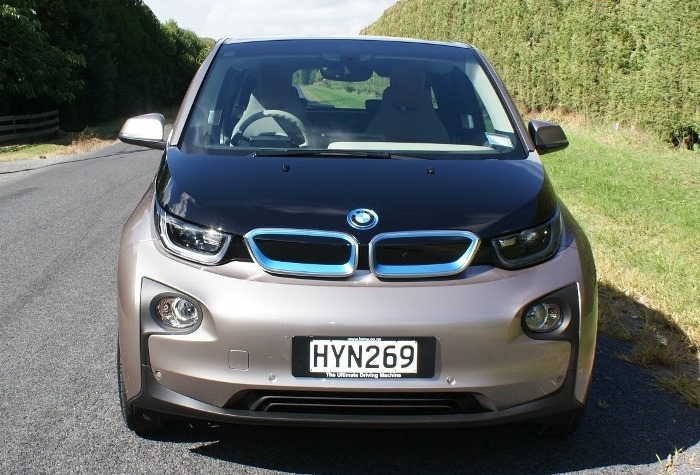
Car reviews
Read our expert car reviews - where we give insight into the latest vehicles to hit our roads.
23 March 2015
The i3 is a joy to drive and the cabin is a particularly pleasant environment in which to travel. It’s quiet, lively and what’s more, it’s completely different; something that those of us who have been around the motor industry for a while have rarely (if ever) experienced.

We’ve seen electric vehicles before, but the BMW i3 takes sustainable motoring to a whole new level.
BMW’s design team have essentially binned every pre-conceived old school motoring ideal and having been given the freedom to start with a completely clean sheet, have come up with something that’s so radical that motoring traditionalists are not sure what to make of it, making it the subject of much conversation in motoring circles.
But despite challenging traditional motoring values, it makes such an impression that even the staunchest petrol head (guilty as charged!) can’t help but be in awe of the technology, the radical design and once behind the wheel, impressive performance of BMW’s latest creation.
A first in so many ways, the i3 has achieved the seemingly impossible by winning both the 2014 World Green Car of the Year and 2014 World Car Design of the Year. Flying in the face of traditional perceptions, where “green” equates to boring and “design” being seen as conforming to popular current day fashion, the i3 is at the opposite ends of both spectrums in being far from dull and a million miles from conformity.
Manufactured using sustainable materials; from plastic panels made from recycled milk bottles to eucalyptus wood derived from 100 percent certified regenerating forests planted in close proximity to the production plant, ensuring shorter supply channels and assisting sustainability in the production stage.
Even the leather upholstery uses a natural tanning agent derived from olive leaves, and to ensure minimal carbon footprint and the manufacturing plant is powered by hydro and wind turbine-produced power.
To ensure holistic sustainability, even end-of-life sustainability in the form of the ability to re-cycle almost everything that goes into the production has been catered for. This car is a major step on the road to true zero-emission motoring.
And it’s not just the green element that gives the i3 its appeal. For anyone not familiar with EVs, the totally silent start up is a weird sensation, but one that you quickly adapt to. The 125Kw/250Nm electric engine impresses and as with all EVs, maximum torque is available right from the get go, so no spooling up waiting for the peak torque as with internal combustion engines. Getting to our open road speed limit from standstill in 7.9 seconds, it’s no slouch and within 0.3 of a second of the turbo-charged BMW 320d or 320i.
Relying on the electric motor to act as a generator when decelerating, energy recuperation recharges the Lithium-ion battery on over-run, as is the case with other EVs. But in this instance the braking torque of the energy recuperation is particularly effective in slowing the car down when the accelerator is released, so braking can be achieved to a certain extent via the accelerator.
Being a particularly roomy four seater, rear seat passengers enter and exit through rear-hinged doors, giving a wide opening and real ease of access thanks to the absence of a B pillar, although the slight downside is that the front doors need to be open in order to open the rears.
In Europe and some other international markets, the i3 is offered as a pure EV or with the option of a 647cc petrol powered generator, known as a Range Extender (REx). For our market, BMW New Zealand have quite sensibly ticked the REx box for all models.
With a claimed range of between 130km and 160km on electric power and up to 340km when the REx kicks in, range should not be a concern for most New Zealand applications, despite the fact that in real world conditions, (no different from any vehicle), the claimed range may be a bit of a stretch for drivers with a heavy right boot.
However, for our day with the i3, the range meter showed 100km range when we picked the car up, and after our 75km drive stint, still showed 25km when we dropped it back, so maybe the claimed range is closer to reality than that of most fossil fuelled engines.
Battery temperature fluctuations are an issue for many EVs, hindering both performance and battery life. To address this, the i3’s battery pack has an intelligent heating and cooling system, meaning the battery is less affected by temperature fluctuations. The battery has an 8 year or 100,000km warranty and the remainder of the car, the warranty is for 5 years.
Charging can be completed in 6 to 8 hours from a conventional household powerpoint, or reduced by 30% if a the optional BMW Wallbox is installed.
Priced from $83,500 drive away, the i3 is a joy to drive and the cabin is a particularly pleasant environment in which to travel. It’s quiet, lively and what’s more, it’s completely different; something that those of us who have been around the motor industry for a while have rarely (if ever) seen.
Like many of Munich’s offerings, the price ramps up if you tick a few option boxes, but for those early adopters with a social conscience, there’s nothing else on the market quite like it.